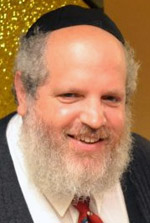Tetzaveh & Purim

CARLSBAD, California — This week’s Torah portion continues with the theme that began last week in the portion of Terumah. Last week we read about the design and construction of the Tabernacle. This week we learn about the Cohanim, the priestly class, who would serve in the Tabernacle. The portion describes the special garments they would wear – four for a regular Cohen and eight for the Cohen Gadol (High Priest), as well as the unique inauguration ceremony where the Cohanim became officially sanctioned to serve in the Tabernacle. The portion also tells us about the Golden Altar that was used for the incense offerings and was placed in the room called the Holies together with the Table for the Showbread and the Menorah.
What we do not find mentioned in this week’s portion is the name Moses. This is an anomaly, which grabs the attention of the Sages, as Moses’ name appears in every portion of the Torah from the time he is first introduced to us at the beginning of Exodus to the time of the Book of Deuteronomy, which Moses wrote largely in the first person. This omission is strange especially when one considers the fact that Moses is referenced numerous times within the portion, as he is commanded to do numerous things.
The Baal HaTurim (Rabbi Yaakov ben Asher, a famous medieval rabbinic authority) answers this question by explaining that when some of the Children of Israel constructed the Golden Calf and worshiped it as their leader, the Almighty was ready to utterly destroy the young nation and begin again with Moses. However, Moses would have none of it and argued with G-d, as it were, stating that if He could not forgive even for this heinous transgression, that He should take Moses’ name out of His Book (meaning the Torah). G-d did forgive the people, but when someone as righteous as Moses makes a decree, even if it is conditional and the conditions are not realized, it still has an effect. In this case the effect was that Moses’ name did not appear in this portion despite the fact that the portion does reference Moses numerous times.
The Lubavitcher Rebbe, Rabbi Menachem Mendel Schneerson of Righteous Memory, teaches us, ‘While Moses’ name does not appear in the Parshah of Tetzaveh, Moses himself is very much present: the entire Parshah consists of G‑d’s words to Moses! Indeed, the Parshah’s first word is ve’atah, “and you”—the “you” being the person of Moses.
Indeed, the word “you” connotes its subject’s very self, while a person’s name is a more superficial “handle” on his personality. This means that Moses is more present in our Parashah—that is, present in a deeper, more essential way—than any mention of his name could possibly express.’
‘This is fully in keeping with the Baal HaTurim’s explanation (cited above). Because Moses was prepared to forgo mention of his name in the Torah for the sake of his people, he merited that his quintessential self—the level of self that cannot be captured by any name or designation—be eternalized by the Torah. It is this level of Moses’ self that is expressed by his “nameless” presence in the Parshah of Tetzaveh.’
Maybe we should use this insight to answer a famously unique fact about the Megillah, the Book of Esther, that tells us the story of Purim, and which we will read from this coming Monday night and Tuesday. There is one book in all of TaNaCh (Torah, Nevi’im, and Ketuvim, the Written Bible) in which the name, any name, of the Almighty does not appear. That would be the Book of Esther.
How can there be a book of the Torah without G-d’s name appearing in it!? Is not the Bible the record of the Creator’s interactions and instructions with and to the Jewish people?
Perhaps we can now understand this glaring omission. Perhaps the fact that G-d’s Name does not appear in the Megillah, indeed even His participation in the story is something that is only understood when one retrospectively analyzes what exactly happened, demonstrates to us an essential participation in the events described. “Where you find His greatness there you find His humility,” the Talmud tells us. Maybe, just maybe, the story of Purim, in which G-d conceals Himself – thusly allowing us to find Him – is the ultimate revelation of G-d’s humility.
All of this is more than just an exercise in mental calisthenics. It tells us something very important and practical in our daily lives. G-d contracts Himself, as it were, so that we can shine! The story of Purim allowed our people to again fully accept the Torah connecting our people, even while they are in a horrific situation, in the Diaspora and with a decree of annihilation hanging over their heads, to choose the ways of G-d. They overcame the test with flying colors and were therefore able to overcome their enemies!
We too can overcome our enemies, both internal and external, by embracing this approach of seeking out G-d wherever we may be!
Shabbat Shalom and Chag Same’ach!
*
Rabbi Yeruchem Eilfort is Director of Coastal Chabads and Chabad at La Costa. Rabbi Eilfort welcomes readers’ comments and questions and may be reached at RabbiE@ChabadatLaCosta.com.